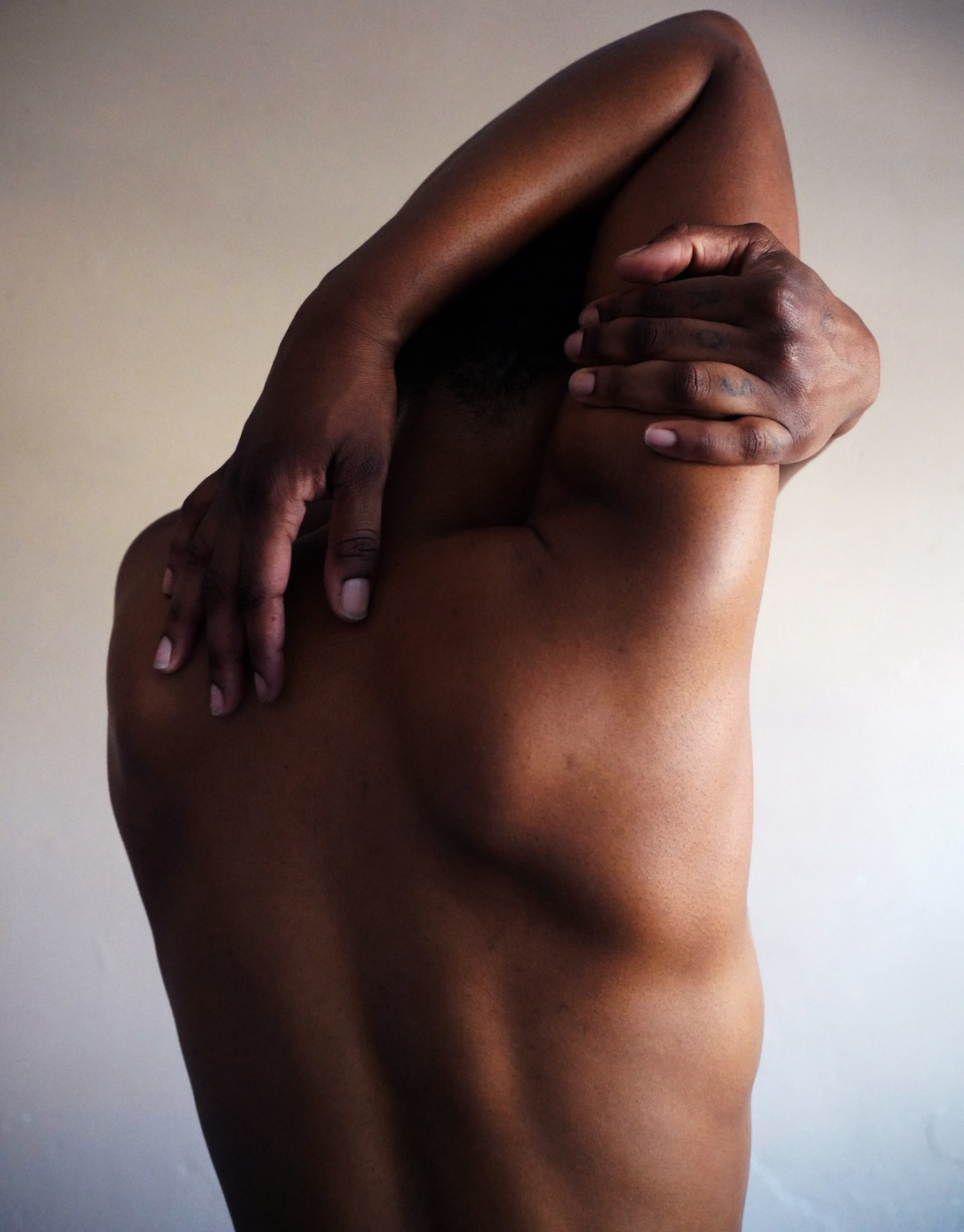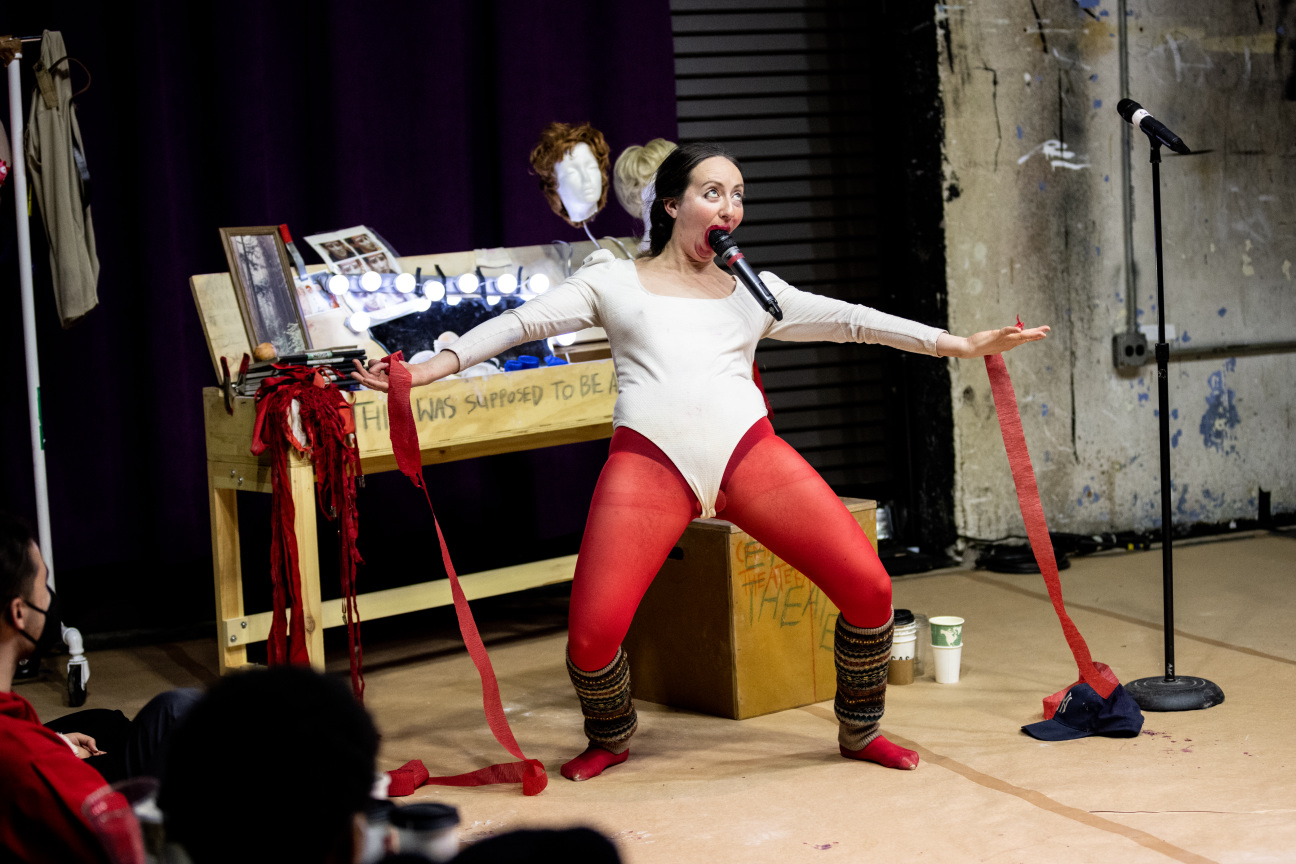Their work requires more planning to see, is harder to collect, and not always even documented, but performance artists have been the tip of the avant-garde for the past 50 years.
Oftentimes, they are the ones forcing conversations the rest of us are too timid to have, or making obvious what’s much easier to ignore. They usually make objects in addition to performance, but it’s what happens when they are performing that is the essence of their practice. This June, Duly Noted presents five queer performance artists, whose work couldn’t be more varied, but whose relevance is undeniable.

Malcolm Peacock
It takes Malcolm Peacock about 63 minutes to run from his home in Crown Heights to the studio where he is currently working as a resident at the Studio Museum in Harlem. “Running is a good way for me to think about the mind and the body’s capacities and how a body can stretch or make something out of the matter that is present, how a body can go further or faster or deeper to explore a different zone that maybe it hasn’t gone into yet,” he shares.
Endurance, what it requires and what it cultivates, is an important part of Peacock’s practice, which is rooted in writing and performance and has recently come to include more sculpture. “I’m excited about endurance as a form, as a space of learning and exploration,” he says.
Following showings at the 58th Carnegie International in 2022, where he was awarded the Fine Prize, and Artists Space in 2023, Peacock will have works on view later this year at MoMA PS1, as part of an ongoing collaboration between MoMA PS1 and the Studio Museum. The sculptural works he’s planning to show are about the great outdoors, “the general term we use for outdoor environments or dreamy landscapes that tend to be awe inspiring, picturesque, very Americana,” he shares.

NIC Kay
For this year’s River to River Festival, NIC Kay is re-doing lil Blk, a performance they first presented at Chicago’s Links Hall in 2015. The piece was originally a way for Kay to think about gender and “the moment in my life where I felt the most in my body,” they explain.
It’s now also about aging and time and memory and what it means to evolve as a person in a queer body. “We constantly change and in some ways, we have to let ourselves go and it can feel like death,” they say. “But I’m also excited to emanate a different kind of power that I didn’t have in my 20s.”
Trained as an actor, Kay has been making performances, often highly physical and choreographed, for the past 15 years. There’s a deep sensitivity and equal measures of vulnerability and power in their work, which is also deeply connected to music and sound. “It will be a party, it will be a funeral, it will be in many ways an experimental theater piece,” they share.
Kay performs lil Blk on June 13 at The Lesbian, Gay, Bisexual & Transgender Community Center and on June 14 at The Monster Bar. In early July, Kay has a performance at the Shed, and later this year will be at DIA Chelsea and the Kitchen.

Amber Hawk Swanson
“We’re making a talk show, and one of the hosts is a robot,” says Providence-based Amber Hawk Swanson of The Harmony Show, her durational performance. That’s the easy explanation, but there are also more complicated ways to understand the show, which is co-hosted by Davecat, a robosexual advocate for and active member of the iDollator community, and his life-size silicone wife, Sidore Kuroneko.
The Harmony Show now includes 26 episodes, live streamed from various locations, including the Neuberger Museum, where six episodes were performed last year. Hawk Swanson of course understands that many people may be “playing along” with the idea of a life-size doll as a romantic or sexual partner, but through her work with Davecat and others in the iDollator community, she’s also exploring the unexpected (and not always misogynistic) reasons people may seek out relationships with dolls, like gender surrogacy.
“Over the years, friends of mine have talked about wanting to dress in the ways they dress their dolls or wanting to be the material silicon, so I was interested in this project that looks to so many from the outside like just wanting to dominate something that looks like a human woman. Maybe it’s that sometimes, but it’s also a lot of other things,” explains Hawk Swanson.

Barnett Cohen
South Africa-born Barnett Cohen is spending their summer in residence at Denniston Hill, reading queer theory and poetry as they prepare for an upcoming performance. “My performances are not didactic,” Cohen shares. “They’re not really about anything.”
Instead, the New York-based artist prefers a sort of choreography in which performers respond, in their own ways, to texts written by Cohen, which tend to have both a political and queer orientation. “Because of their embodied histories as performers and as people, the text will have some resonance, and we’ll work through that choreographically,” Cohen explains. “We kind of build it together.”
Cohen’s practice also includes painting, but it’s connecting with people and the collective approach to figuring things out that drives their work, which includes the founding of the Mutual Aid Immigration Network, a free support hotline for people detained in American immigration centers.
Cohen recently presented work as part of Performa in 2023, and with Movement Research at Judson Church earlier this year. Their next performance will be a part of the inaugural Performissima festival at the CWB in Paris on October 18.

Alex Tatarsky
One of CULTURED's 2023 Young Artists, Alex Tatarsky, has continued apace with their performances, having just completed a double-header in Philly while preparing for a presentation at the Whitney Biennial.
Tatarsky identifies as a clown, which, they say, is what allows them to trust the present. Though they sometimes do more scripted work, like last year’s run at Playwrights Horizon, this year has seen a return to improv.
“It’s showing up and trusting, trusting yourself and the audience and the exchange of energy, which feels to me like the thing that performance is uniquely positioned to do,” they say. “It’s about acknowledging what is happening in the room and that we’re doing this very odd thing where a group of people are watching one person and for some reason we’ve chosen to exchange energy and attention in this way over a period of time.”
Tatarsky’s Biennial performance, titled Feeling$ Feeling$ Feeling$, will run July 21 and 22.










 in your life?
in your life?

